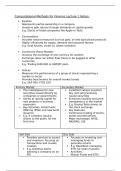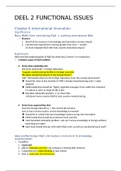When raising external finance, valuating a venture is critical to understand the future cash flows that
will go to investors; and to understand whether the terms that investors propose are acceptable. DCF
analysis of entrepreneurial ventures is done by estimating future cash flows. Since cash flows are
estimated, a few reasonable assumptions about the firm are necessary.
The case assumes the following1:
The business is financed fully with equity;
$1 million initial investment;
A growth rate of 5% per year after 2003;
or a modest growth of 2%;
10-year government bonds yielding 7% per year.
The starting point for this analysis is to determine the increase in working capital, which is equal to:
Net Working Capital = Current Assets – Current Liabilities
= Cash + Inventory + Receivables – Payables
1998 1999 2000 2001 2002 2003
Current Assets $3.171 $4,825 $13,939 $25,753 $38,045 $52,604
Current $1,140 $2,005 $4,869 $6,302 $7,064 $8,369
Liabilities
Working $2,031 $2,820 $9,070 $19,431 $30,981 $44,235
Capital (WK)
ΔWK $2,031 $789 $6,250 $10,361 $11,550 $13,254
Next, we can proceed to determine the cash flows. The formula is as follows:
FCF = (Revenues – Costs – Depr) * (1 – τc) + Depr – CapEx – ΔNWC
Where
FCF = free cash flow
Depr = depreciation
τ = corporate tax rate
CapEx = capital expenditure
ΔNWC= change in net working capital
1
Gompers & Sahlman, 2002, p. 193.










